Those beautiful roses from Ecuador? The fresh lobsters from Canada’s Maritimes on your plate, just hours old? How about your new smartphone from Shenzhen?
They all enjoyed a flight in a cargo plane, part of the remarkable logistics web that transports goods from destinations around the globe.
International commerce relies on dedicated aerial haulers, from small, single-engine turboprops to cavernous 747 freighters. And if something a bit larger than a lobster needs to be delivered – such as a locomotive or the fuselage section of a new airliner – there’s a fleet of special aircraft ready to move just about anything, almost anywhere.
Cargo planes make up just a small percentage of the world’s aircraft fleet, so keep an eye on the skies to spot one of today’s – and tomorrow’s – flying freighters.
Airbus Beluga and Beluga XL
These massive airlifters really do look like a beluga, the white-colored, seagoing mammal that inhabits Arctic oceans.
Airbus SE, the multinational corporation that builds airliners, needed a way to quickly and safely transport aircraft components between European production sites and its final assembly lines in Toulouse, Hamburg and Seville.
Starting with an A300-600 wide-body plane, Airbus engineers lowered the flight deck and grafted a huge cargo bay onto the fuselage to create the Beluga.
Through an upward-opening forward hatch on the “bubble,” completed aircraft wings, fuselage sections and other components easily slide in and out.
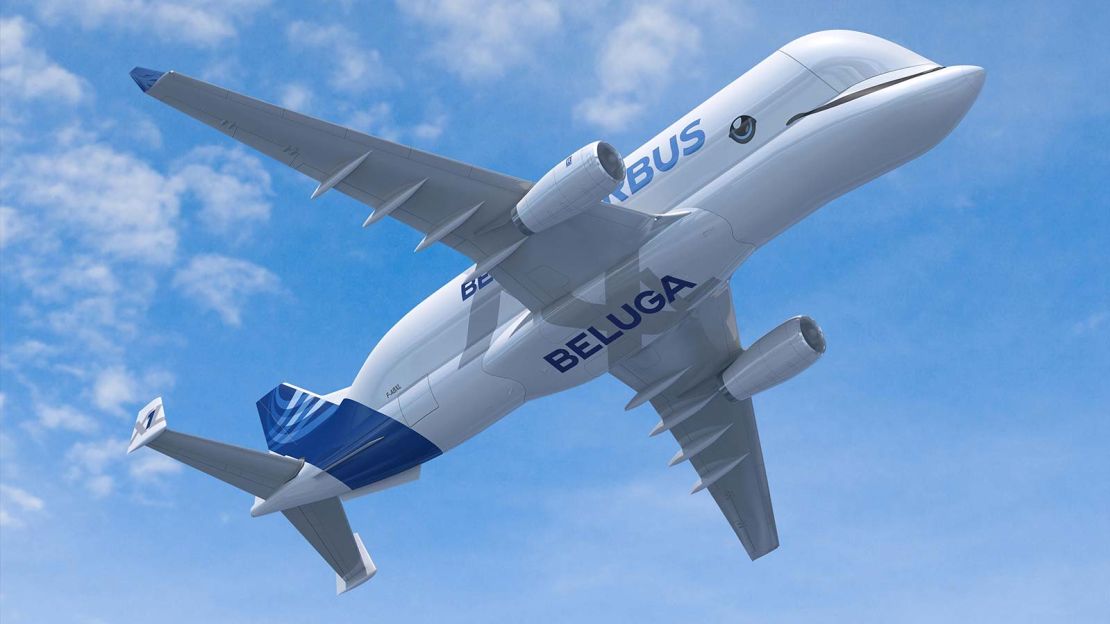
The first new, advanced Beluga XL has just rolled out in Toulouse, with its first flight scheduled for mid-year. It’s based on the A330-200 wide-body airliner, with a bubble six meters longer and one meter wider than the original Beluga.
A fleet of five new XLs will be able to carry larger aircraft sections and heavier payloads, and will eventually replace the smaller Beluga.
Airbus employees chose a whimsical, “happy face” design for the Beluga XL, which will fly with a big smile.
Boeing 747 Dreamlifter
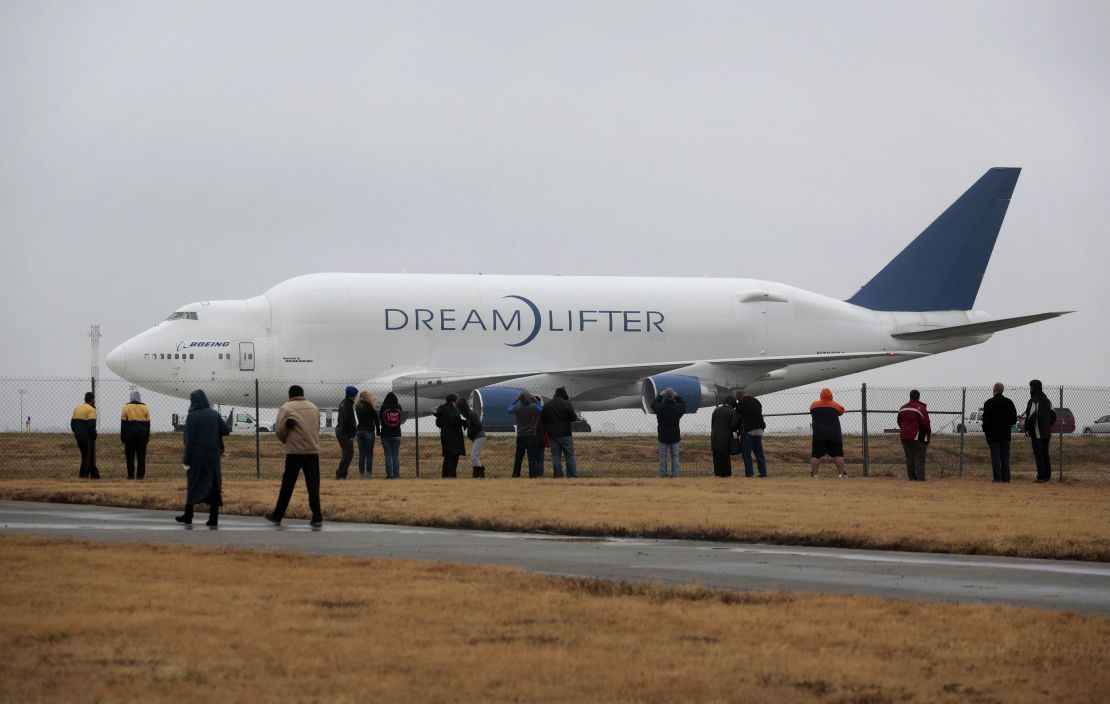
Take a Boeing 747-400 passenger plane, blow out the fuselage so that it looks like the plane is sitting in an enormous hot dog bun, and cut the tail so that it swings open on giant hinges.
That’s the Dreamlifter.
Boeing uses its four Dreamlifters to ferry massive sections of its 787 Dreamliner to the plane’s final assembly lines in Everett, Washington, and North Charleston, South Carolina. Fuselage sections, wings, and other parts of the Dreamliner are loaded and unloaded using specially designed mobile transporters.
Spanning the globe, the 787’s components come from Japan, Italy, and South Carolina and Kansas in the United States.
Antonov An-124 ‘Ruslan’
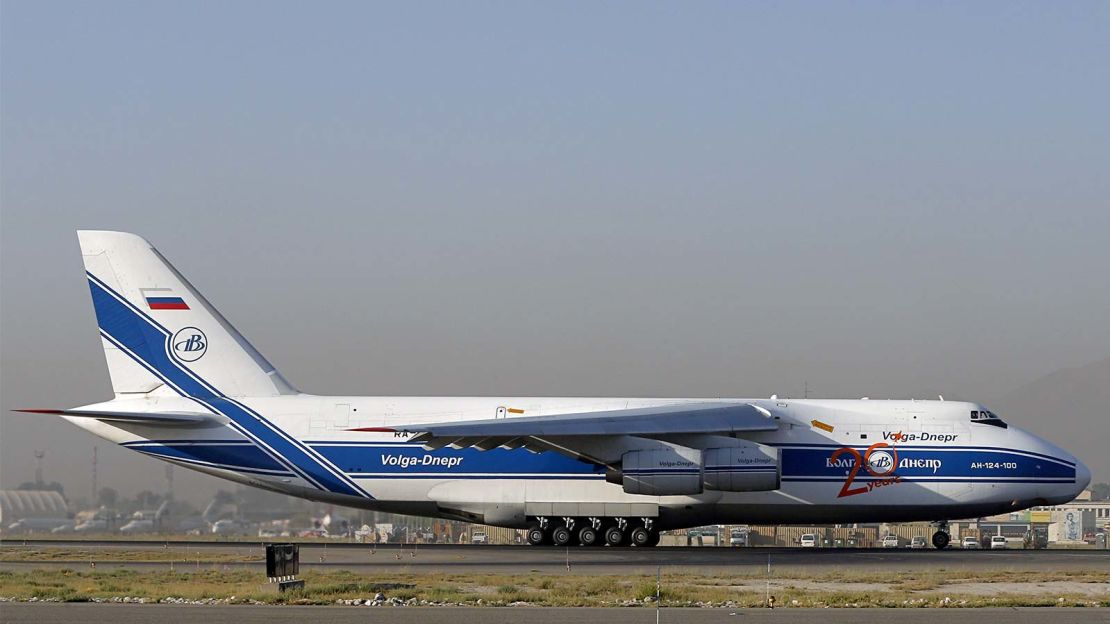
It has 24 wheels, an internal crane system, doors and ramps in the front and rear, and can kneel so that vehicles can easily drive into its cavernous cargo hold.
If the An-124-100 looks a lot like a military airlifter, that’s because it is. More than 50 of the planes were built in Ukraine by the Antonov design bureau for the then-Soviet, now Russian Air Force.
In 1992, Antonov saw an opportunity in the civilian oversize air cargo market, and worked to obtain civilian certification for the huge plane, known as the “Ruslan.”
Since then, a small fleet of 19 An-124s has been flying for Antonov Airlines and Volga-Dnepr Airlines, hauling a remarkably diverse array of supersized and heavyweight cargo.
Just about every kind of cargo has been stuffed into the Ruslan – a massive mobile crane, hydraulic turbines, mining and oil equipment, aircraft engines, a 109-ton locomotive, satellites, concert equipment, and even pure gold.
Antonov An-225 ‘Mriya’
There’s just one An-225. It’s beyond massive, and it’s the world’s largest plane.
With six engines, an incredible wingspan of 88.4 meters, and a payload of up to 250 tonnes (275 short tons), the An-225 was designed to carry the Soviet’s “Buran” space shuttle orbiter atop its fuselage.
When that space program was canceled, the sole Mriya was left in storage for years. Then, in 2000, Antonov decided to bring the An-225 back to life, and the Mriya was certified as a civilian air transport in May 2001.
According to Antonov’s website, the An-225 holds 240 world records, including the airlift of the heaviest and longest pieces of air cargo.
Lockheed Martin LM-100J ‘Super Hercules’
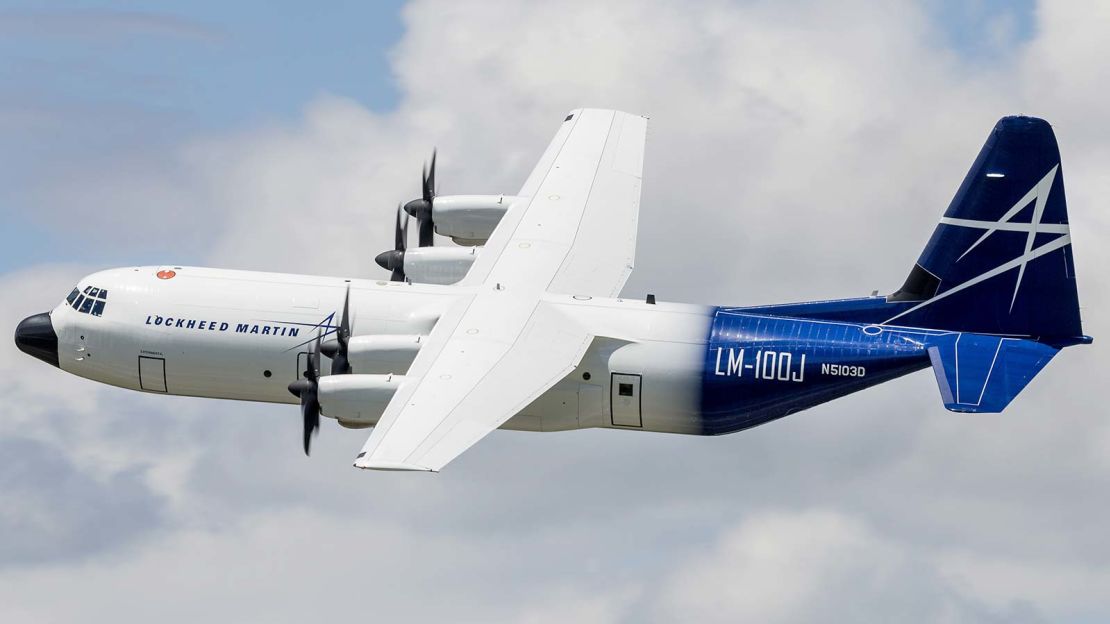
The Lockheed Martin Hercules has been the go-to military airlifter for more than 60 years.
The first plane rolled off the assembly line in Marietta, Georgia in 1956, and since then, more than 2,500 “Hercs” have been delivered to 68 countries, for more than 70 different missions.
And just like its Antonov cousins, the military C-130 has a civilian sister.
Lockheed delivered more than a hundred L-100s between 1964 and 1992, and at least 50 are still flying for cargo airlines, worldwide. A new civilian version of the iconic four-turboprop transport is undergoing flight testing.
Based on the upgraded and stretched C-130J military airlifter, the LM-100J can operate from short and unprepared airstrips.
The Hercules might not be the largest or the fastest awesome aerial hauler, but it’s the dependable workhorse of the skies.
Cessna SkyCourier
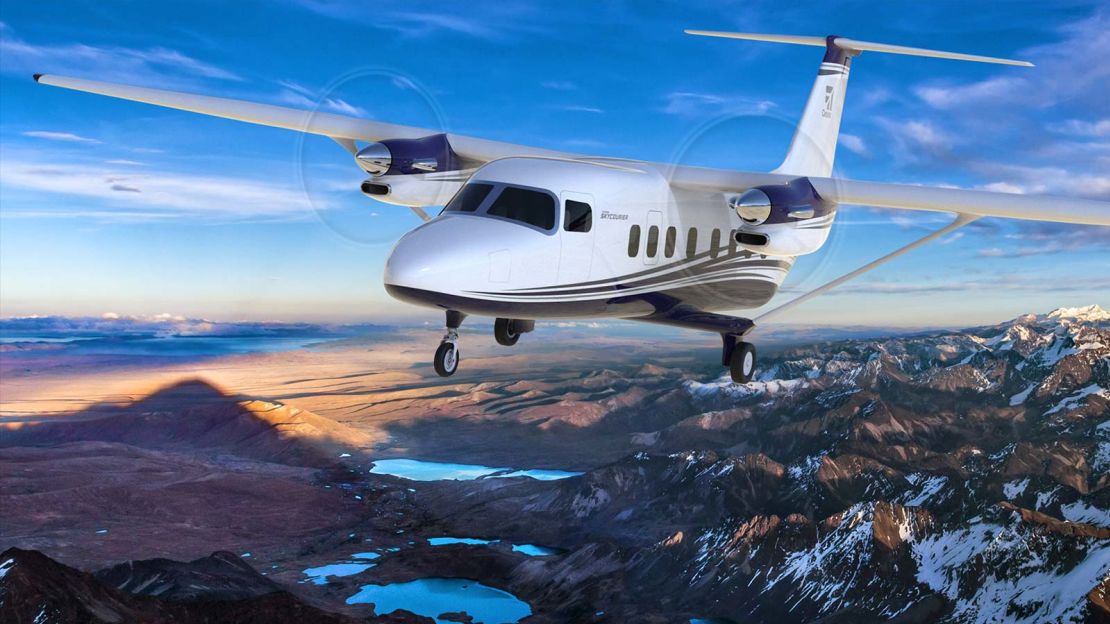
FedEx Express and Cessna have teamed up to build the new SkyCourier, a “feeder” cargo plane designed to haul packages to and from smaller communities.
Through its rear ramp, three standard cargo containers can be loaded into the utility plane’s fuselage.
The SkyCourier will be powered by two reliable Pratt & Whitney Canada turboprops, and eschews advanced aero-materials in favor of a simple and robust design. In service by 2020, FedEx has ordered 50 of these flying delivery trucks, with options for 50 more.
Lockheed Martin LMH-1
The first LMH-1 hybrid airship is under construction at Lockheed Martin’s plant in Palmdale, California.
This leviathan of the skies will get 80% of its lifting capability from the 1.3 million cubic feet of helium in its 280-foot-long envelope, and the rest from its aerodynamic shape and four gimbaled thrusters.
Hybrid airship can haul 20-ton cargo, land on ice
The LMH-1 will carry up to 19 passengers in its gondola, and has a cargo bay sized to match the venerable Hercules cargo plane.
The hybrid airship has an air-cushion landing system that will allow it to operate in austere environments, on land, sea and ice – far away from an airport, and needing minimal ground support.
Blended Wing Body Airlifter
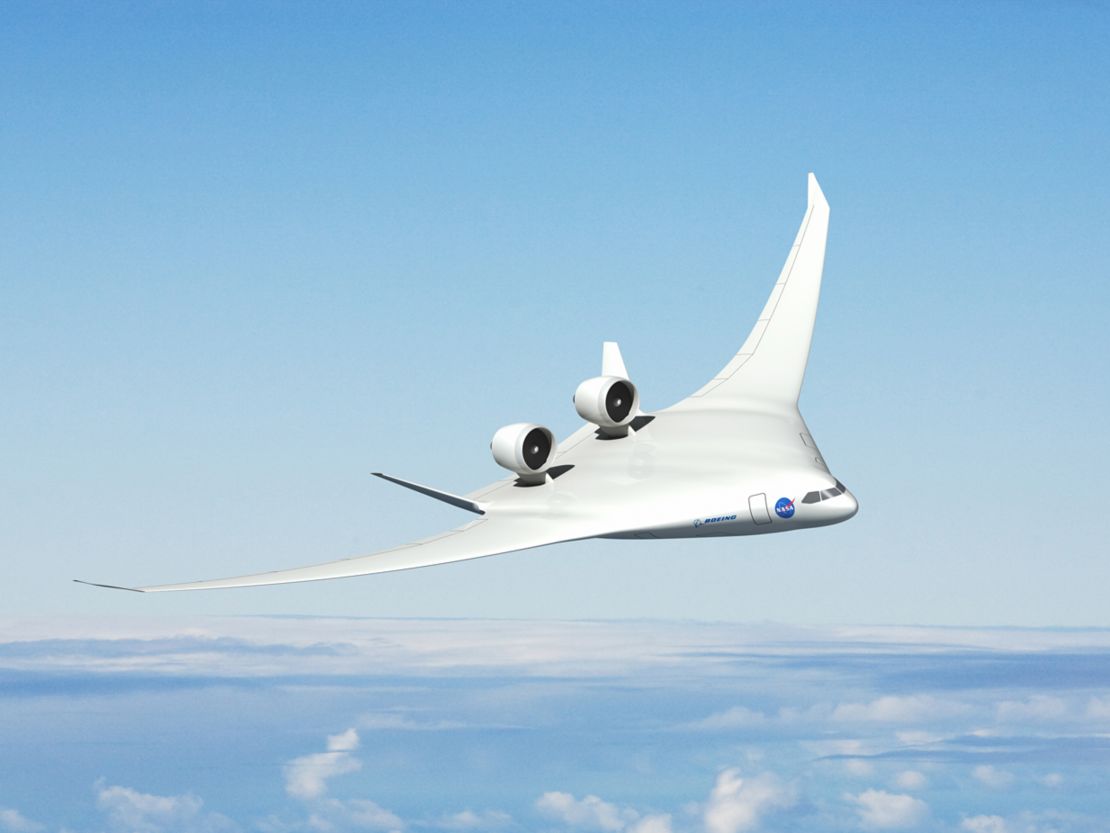
Commercial aircraft have looked pretty much the same for decades – a tube with a set of wings, two or more engines, and a fin and stabilizer at the tail.
But a radical new design is in the works, where a plane’s body and wing merge into one fluid unit.
Looking a bit like Thunderbird 2 from the iconic 1960s TV series, the blended wing body airlifter will have a huge center cargo bay.
A sub-scale technology demonstrator, Boeing’s X-48, was flight tested by NASA, and the concept continues in development.
















